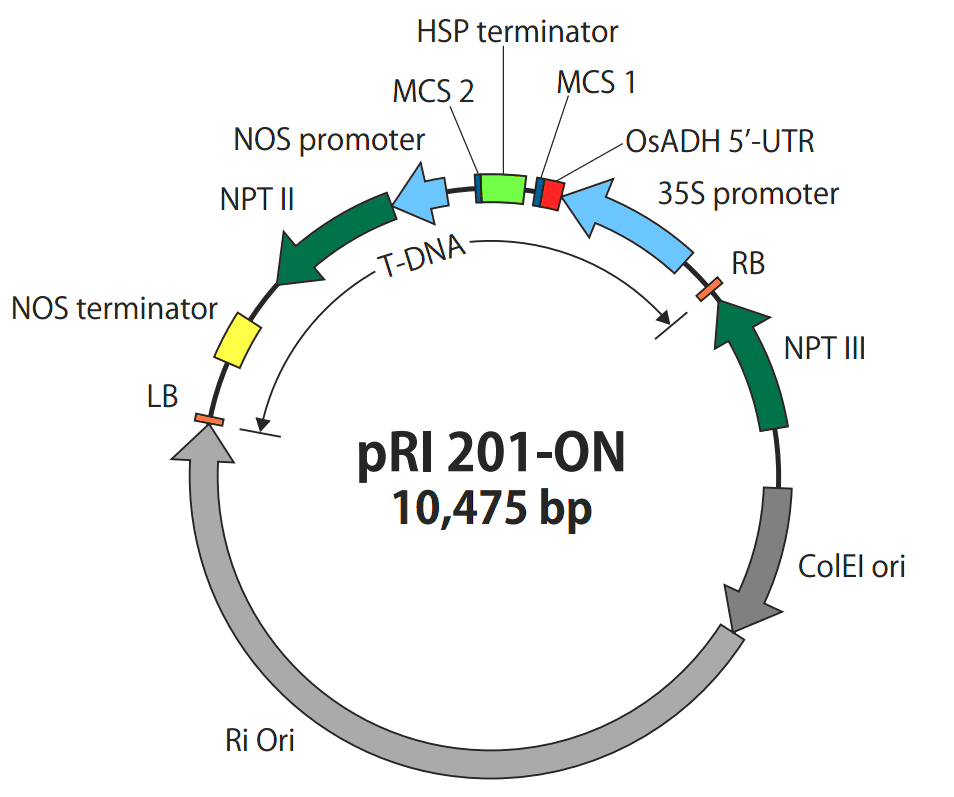×
![]()

- 规格:20μl质粒
- 启动子:35S
- 原核抗性:卡那霉素Kan
- 筛选标记:遗传霉素G418
- 克隆菌株:大肠杆菌HB101
- 质粒简介: pRI201-ON是一个单子叶植物发根农杆菌的双表达质粒。The Ri Plasmid pRI201 is designed for the transformation and expression of target genes from plant cells. This series of binary vectors for plant transformation retains the backbone of the pRI101 vectors, including an alcohol dehydrogenase (ADH) gene-derived 5' untranslated region (5'-UTR) downstream of the cauliflower mosaic virus (CaMV promoter)-derived 35S promoter. Additionally, these vectors have a heat shock protein (HSP) gene-derived terminator in place of the nopaline synthase (NOS) gene-derived terminator, allowing higher target gene expression compared with the pRI101 vector series. Multigene transformation with a single vector can be achieved by integrating an expression cassette containing another gene (promoter + enhancer + gene of interest + terminator) into the vector's second multiple cloning site (MCS2) located downstream of the HSP terminator.
The Ri Plasmid pRI201 binary vector series offers two types of vectors: pRI 201-AN DNA and pRI 201-ON DNA. pRI 201-AN DNA contains an Arabidopsis ADH-derived 5' UTR (AtADH 5'-UTR) and is suitable for dicotyledonous plant transformation. pRI 201-ON DNA contains a rice ADH-derived 5' UTR (OsADH 5'-UTR) and is suitable for monocotyledonous plant transformation. The pRI 201-AN DNA and pRI 201-ON DNA binary vectors for plant transformation have a mutant-type replication origin (Ri ori) from the Rhizobium rhizogenes Ri plasmid. These vectors also contain a replication origin (ColE1 ori) derived from the pUC plasmid; the ColE1 ori allows high copy number replication in E. coli. The vectors' multiple cloning site, located near the right border (RB) of T-DNA, allows stable target gene integration into the plant chromosome.- 质粒图谱1: gif/1-1P106120534945.gif
质粒序列: 点击查看序列